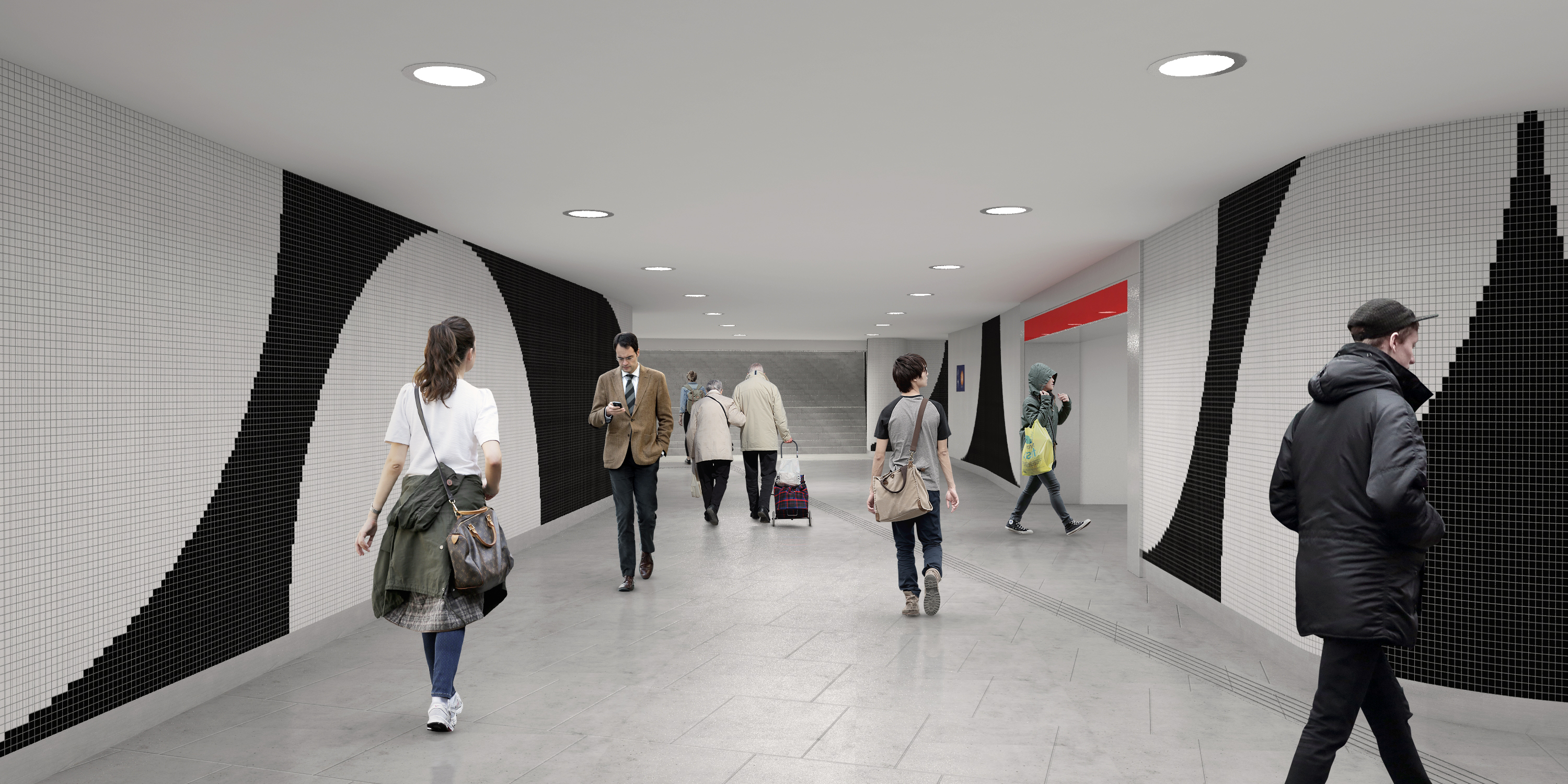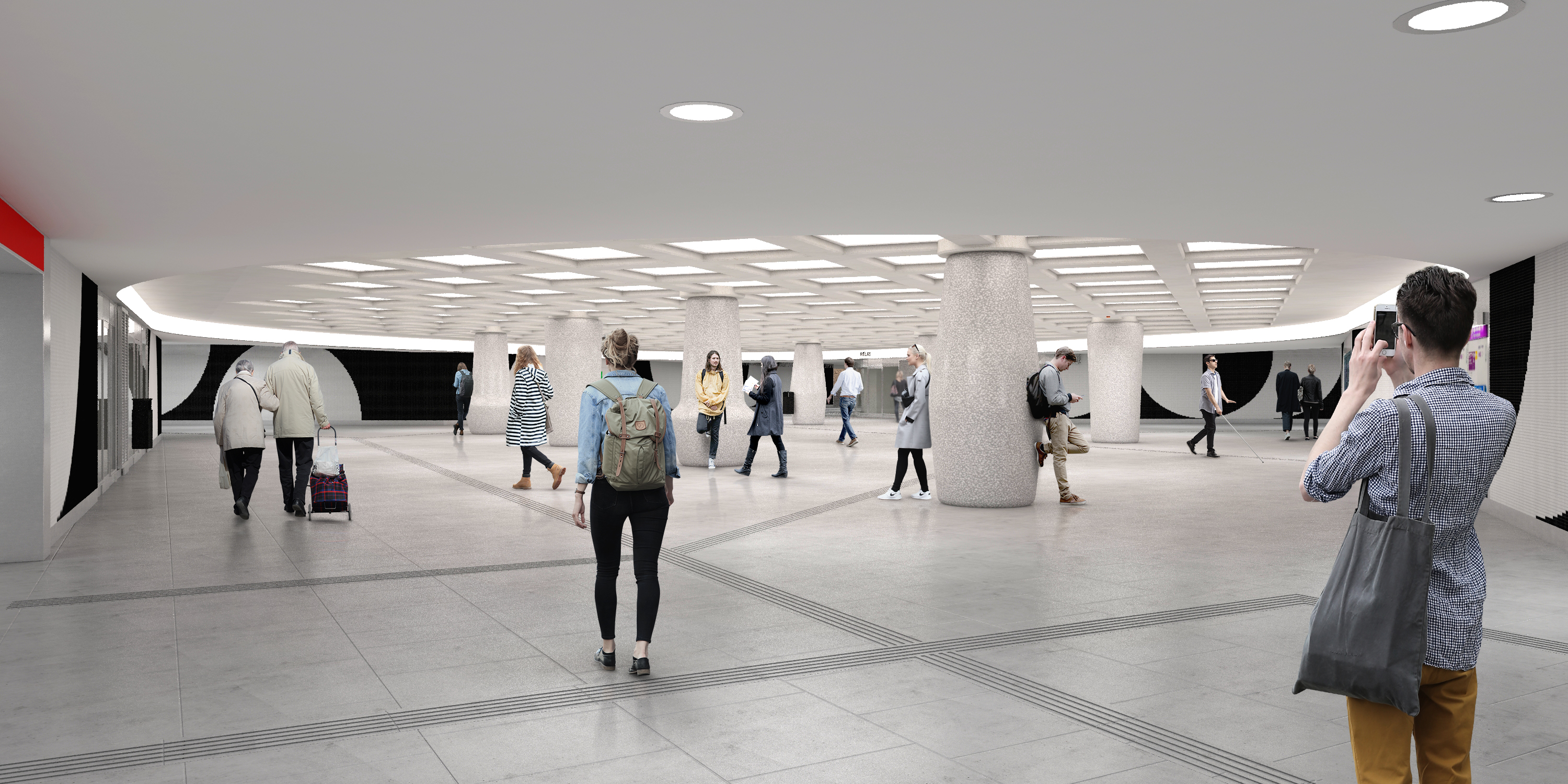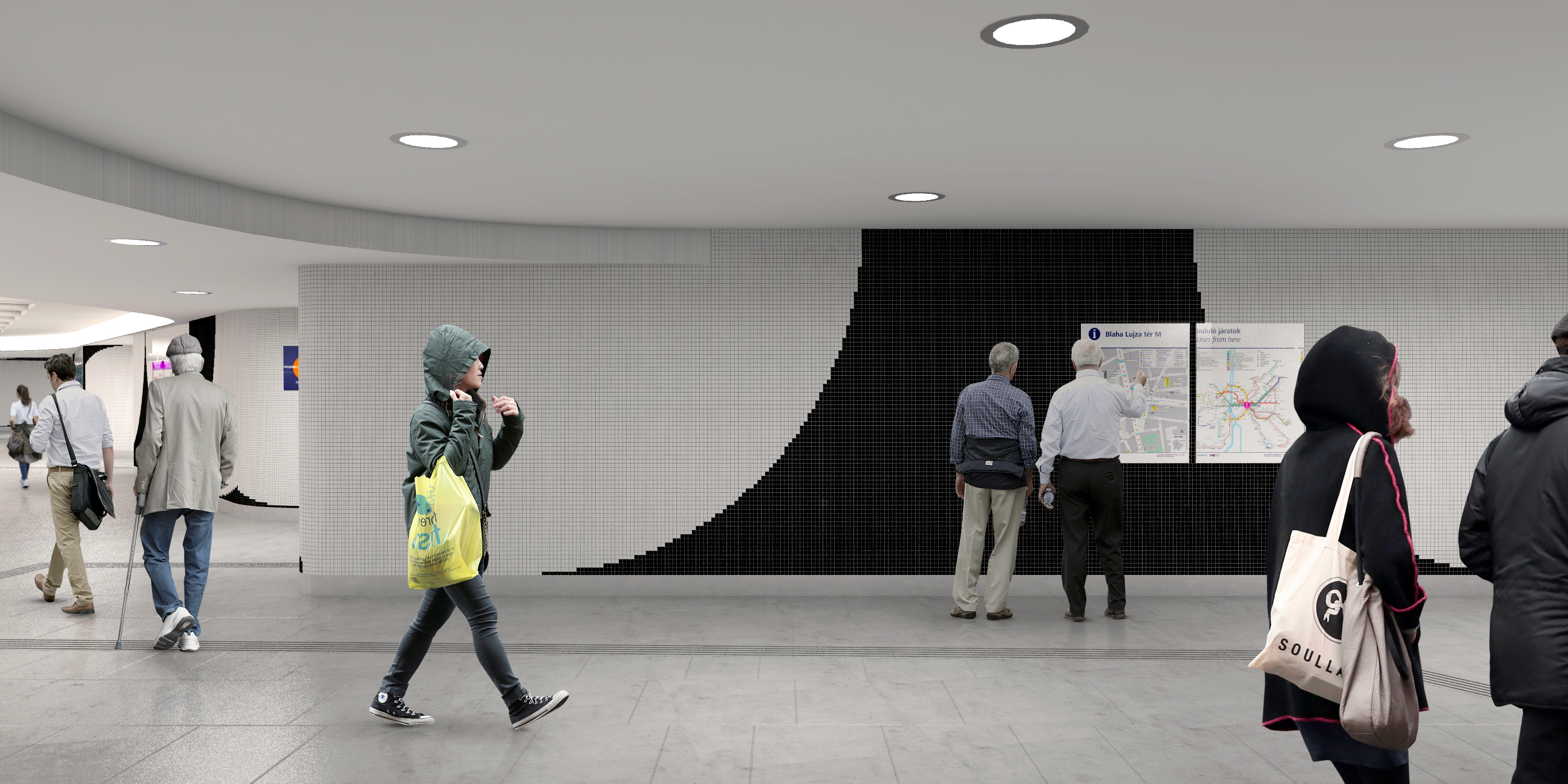BLAHA SUBWAY STATION UNDERPASS


 PUBLIC SPACE DESIGN
PUBLIC SPACE DESIGN
Blaha Lujza tér is a station of the M2 (East-West) line of the Budapest Metro. The station opened in 1970 and is one of Budapest’s busiest intermodal transport hubs.
UVATERV, Hungary’s largest transport infrastructure designers, has commissioned URBA to renovate the underpass leading to the subway station.
The key element of the much needed renewal was the lighting system and to break the harsh space by bending the edges. The artificial stone columns scattered across the central space serve as a meetingpoint, while the curved walls lead people in transit more efficiently.
The mosaic tile mural was designed by Ákos Polgárdi and was inspired by Hungarian graphic design from the 1970s.
UVATERV, Hungary’s largest transport infrastructure designers, has commissioned URBA to renovate the underpass leading to the subway station.
The key element of the much needed renewal was the lighting system and to break the harsh space by bending the edges. The artificial stone columns scattered across the central space serve as a meetingpoint, while the curved walls lead people in transit more efficiently.
The mosaic tile mural was designed by Ákos Polgárdi and was inspired by Hungarian graphic design from the 1970s.
BLAHA SUBWAY STATION

Project team: Márton Lengyel, Rakusz Liza, Oana Pangalos
Client: BKK (Budapesti Közlekedési Központ)
Architect: UVATERV
Graphic design: Ákos Polgárdi
Area: 1200 sqm
Year: 2019
Status: Concept
Location: Budapest, Hungary

Blaha Lujza tér is a station of the M2 (East-West) line of the Budapest Metro. The station opened in 1970 and is one of Budapest’s busiest intermodal transport hubs.
UVATERV, Hungary’s largest transport infrastructure designers, has commissioned URBA to renovate the underpass leading to the subway station. The key element of the much needed renewal was the lighting system and to break the harsh space by bending the edges. The artificial stone columns scattered across the central space serve as a meetingpoint, while the curved walls lead people in transit more efficiently.
The mosaic tile mural was designed by Ákos Polgárdi and was inspired by Hungarian graphic design from the 1970s.

 INTERIOR DESIGN
INTERIOR DESIGN ARCHITECTURE
ARCHITECTURE PRODUCT DESIGN
PRODUCT DESIGN